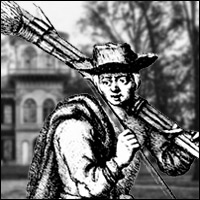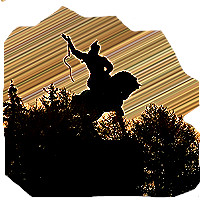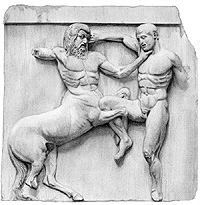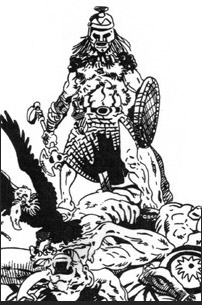The collector handed me his proudest find:
“An 1853 pattern British standard cavalry saber, a one-sword-fits all kind of thing. There are no markings so I take it this was a professional soldier’s weapon, perhaps in Indian service.”
Thoughts of long gone battles crowded my mind as I hefted the saber with the well-worn grip.
Checking for defensive beat marks on the lower forte of the edge, I found two.
Checking for offensive notches at the foible of the blade—roughly the sweet spot in stick-fighting, where the fuller grove ended and a riser ridged up to make the thinner end of the blade strong—I found twice as many notches, between 5 and 7, these being obscured by repeated sharpening of the blade, marking the wielder as an aggressive fighting man, in contrast to the sword of the artillery man I had just examined, which had primarily defense beat notches.
As the collector of mighty, manly things indicated the pummel, this impression gained credence as one could see clearly, four deliberately made, triangular notches in the steel which rode just below the pinky of the swordsman’s hand.
“I suspect this blade has a story behind it” said the deep-voiced collector. “The man who owned this took a care to clean off the blood and keep the blade in excellent condition—sharpened in the field I reckon.”
We stand outside the sword vault under a bright bulb in the dark of the mountainous night and wonder on who wielded this blade and when, with my guess going to the Sepoy Rebellion of 1857 in India and that, for his finishing stroke, he used the thrust of that broadening point.
Being a Bad Man in a Worse World
Fighting Smart: Boxing, Agonistics & Survival











en.wikipedia.org/wiki/Hugh_Henry_Gough
en.wikipedia.org/wiki/Charles_John_Stanley_Gough
en.wikipedia.org/wiki/Sam_Browne
en.wikipedia.org/wiki/James_Blair_(Indian_Army_officer)
Thanks, Shep!